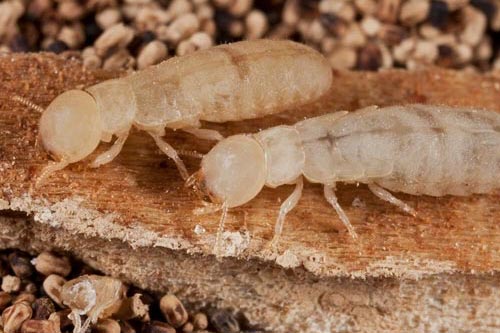Termites have been keeping carpenters annoyed and employed for millennia. These sneaky little creatures can turn a solid wood structure into a pile of toothpicks in short order.
Each year, termites and similar pests cause an estimated $30 billion in damage to crops and man-made structures in Canada alone. So, knowing how to prevent these little buggers is important. There are a few tricks you can do to ensure your old house is as safe as possible. Though no wooden structure is completely safe from termites, these tips can save you money and frustration.

1. Fix Leaks
Termites love soft wood! Much the same way we appreciate an especially tender steak, termites are looking for some soft tasty wood to munch on. When you have a water leak, whether, from leaking pipes or an old roof, that water is causing wood to soften up. Wet wood is softwood. And often times, you’ll have a colony of termites set up shop right at the spot where the wood has been softened up from months or years of a leak softening the wood up.
Be vigilant about your old house’s preventative maintenance. Check for leaks annually in the attic and basement or crawl space. Fixing these leaks early is like slamming the door in the termite’s faces.
2. Use Borate
Spraying borate onto any wood prior to priming and painting is an excellent way to prevent termites, carpenter ants, and some wood destroying fungi from attacking your house. Products like Bora-Care are simple to apply, you just dilute with water and spray on any wood you want to keep termites off of. The sprays soak into the wood and make for a very unappetizing meal. After it dries, you can still prime and paint any treated wood.
The great thing about these sprays is that they only need to be used once. One treatment works for decades as long as the boards aren’t exposed to rain before being painted. And while many houses are treated with borate during construction these days you can also treat any existing house just as easily.
3. Use Old-Growth Wood
Yet one more reason to use salvaged materials to repair your old home. If you have some damage to your house that needs repair, try using reclaimed old-growth wood for the repair instead of the soft new wood from lumberyards and hardware stores. Old-growth lumber is higher in resins, has more rock hard “late wood”, is more stable, more rot-resistant and a slew of other benefits. All that translates to a wood that is less attractive to termites and other insects. Find a local architectural salvage yard or restoration carpenter and they can help you find the right wood for the job.
4. Get a Termite Bond
In case you’re not familiar with how a termite bond works, here’s the skinny. You pay a pest control company a couple of hundred dollars every year to ensure you against termite infestations. If they find active termites in your house they treat for free and usually pay for any damage caused by the termites. A termite bond works good because it transfers the risk of a termite problem to the pest control company and off of your shoulders. Another positive is that the company is motivated to come out and do spot treatments (also free with a bond) because if there is damage it’s their responsibility.

That’s it! The rest that you can do is to pay attention to. If you see evidence of termites like rainbow looking wings around your windows or frass, which looks like poppy seeds but is actually the waste of termites. Either of those is sure-fire signs that you’ve got termites. Keep an eye out and practice these tips and your house should be just fine for years to come.
Natural Pest Solutions
46167 Yale Rd, Chilliwack, BC V2P 2P2
778-860-5313
https://mynaturalpestsolutions.com/ca/pest-control-chilliwack-bc/
